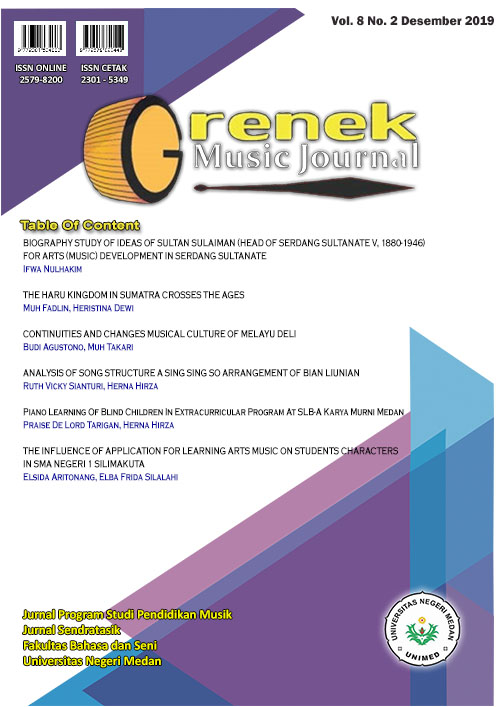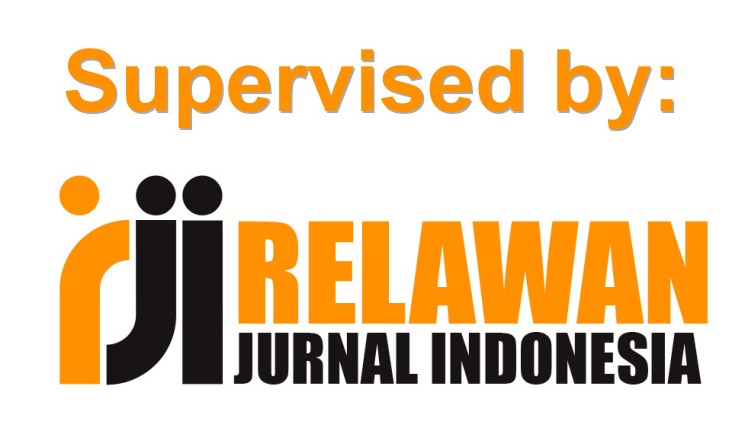ANALYSIS OF SONG STRUCTURE A SING SING SO ARRANGEMENT OF BIAN LIUNIAN
DOI:
https://doi.org/10.24114/grenek.v8i2.14289Keywords:
Analysis, Structure, A Sing Sing So, Arrangement.Abstract
The research aims to determine the structure and arrangement of the song A Sing sing So arrangement Bian Liunian. The theories used in this study include the understanding of analysis, the understanding of structures, the notion of music, the understanding of interpretation, the understanding of songs, the definition of A Sing Sing So. This research uses a qualitative method of descriptive research that is a research method aimed to describe in detail and clearly about a phenomenon that is the focus of research. This study is a qualitative descriptive study, therefore, this research was conducted in the laboratory of Sendratasik department which was carried out in February 2019 “ June 2019. The results of this study show that the song of A Sing Sing So of Bian Liunian arranger has 13 motifs along with its supporting motif, has 6 phrases consisting of phrase questions and answers, this song is also a two-part song consisting of part A and B. Arrangement of this song can be seen from the melody, rhythm and harmonization of Mandarin nuance but the interpretation of the song does not correspond to the meaning of the actual song.Downloads
Published
2019-08-07
Issue
Section
Grenek Music Journal
License
Copyright (c) 2019 Ruth Vicky Sianturi, Herna Hirza

This work is licensed under a Creative Commons Attribution-ShareAlike 4.0 International License.
Authors published with the Grenek: Jurnal Seni Musik agree to the following terms:
- Authors retain copyright and grant the journal the right of first publication with the work simultaneously licensed under a Creative Commons Attribution License (CC BY-SA 4.0) that allows others to share the work with an acknowledgment of the work's authorship and initial publication in this journal.
- Authors are able to enter into separate, additional contractual arrangements for the non-exclusive distribution of the journal's published version of the work (e.g., post it to an institutional repository or publish it in a book), with an acknowledgment of its initial publication in this journal.
- Authors are permitted and encouraged to post their work online (e.g., in institutional repositories or on their website) prior to and during the submission process, as it can lead to productive exchanges, as well as earlier and greater citation of published work. (See The Effect of Open Access)








